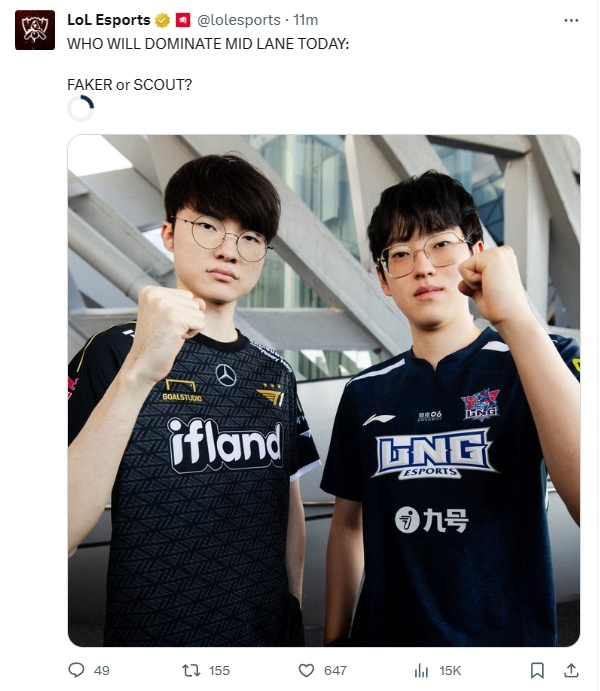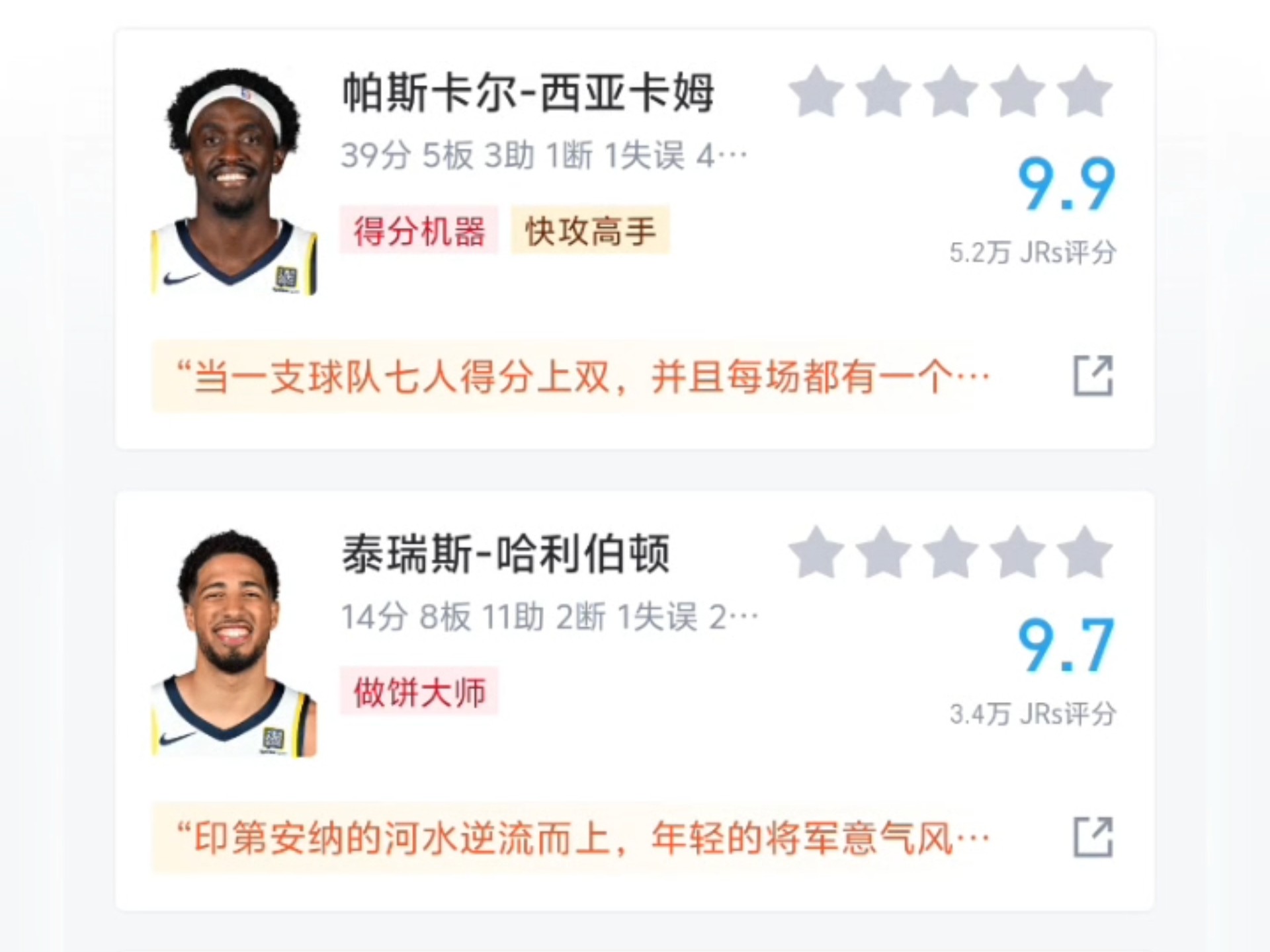(18年考研英语真题同源 外刊赏读 第45篇)
文章来源:《大西洋月刊》
文章标题:How to Play Like a Girl (如何像女孩一样玩耍)
男孩女孩天性有别,那么在玩具的世界里,也分男女吗?答案是肯定的。玩具制造者乐高做了一项研究,结果发现即使是玩相同的玩具,男孩和女孩也会有不同的方法。科学研究早就发现,18个月的婴儿已有了性别意识,而且这种意识会持续到整个童年时代。然而孩子的性别意识往往并不正确,他们会把取决于不同文化和教育环境的结果当成是与生俱来的天性,而这并不利于孩子们培养良好的性别意识。
原文
I ①Two years ago, a 7-year-old girl named Charlotte wrote a letter to the toymaker Lego with a straightforward request.
II ①“I love Legos,” she wrote, “but I don’tlike that there are more Lego boy people and barely any Lego girls.” ②The girls in the Lego universe, Charlotte had noticed, seemed preoccupied withsitting at home, going to the beach, and shopping—while the boys had jobs,saved people, and went on adventures.
III ①Charlotte, Lego acknowledged, had a point. ②“It’s fair,” said Michael McNally, a Lego spokesman who says the company receives letters from kids all the time. ③ “Why wouldn’t there be more female representation?”
IV ①Years before Charlotte sent her letter, Lego was already keenly focused on how girls perceived the brand. ②It was 2008 when the toymaker decided togather global data about who buys Legos. ③What they found was startling.④In the United States, roughly 90 percent of Lego sets being sold were intended for boys. ⑤“Seeing that the play pattern was really skewing so heavily toward boys, we wanted to understand why,” McNally said.
V ①Lego found that girls and boys played with Legos differently from one another. ②They consistently had distinct ideas about how to interact with the same toys they encountered—expectations that seemed to be drawn along gender lines infocus groupafter focus group. ③Lego had stumbled into a dynamic that’s as familiar as it is controversial; the idea that boys and girls, from a very young age, construct divergent worlds for play.
VI ①There’s much academic research to back upthe notion that girls and boys gravitate toward different toys. ②And babies as young as 18 months old show gender-related behaviors when playing with certain toys, differences that persist throughout childhood. ③Further research shows the perceived gender of a toy itself can have “significant impact on toy preferences and exploration,” wrote the authors of a 2003 paper, published in the journal Educational Psychology, about how children play with toys.
VII ①Researchers have found that toys judged tobe most appropriate for girls tend to be attractive, creative, nurturing, and “manipulable,” whereas toys viewed appropriate for boys are more competitive, aggressive, constructive—designed to encourage sociability and to reflect reality.
VIII ①Kids also tend to believe that their genderpreferences are innate.②“Once children learn that being a boy or agirl is important, they come up with their own, often inaccurate, explanations about how and why boys and girls differ,” wrote Christa S. Brown on her Psychology Today blog, Beyond Pink and Blue. ③“They assume boys and girls are different in deep, fundamental ways.④They assume that culturally specifictraits, like wanting to sew or be a firefighter, are innate and biologically driven. ⑤Unfortunately, once these stereotypes are in place, they are difficult to change unless you address them head on.”
How to Play Like a Girl, by Adrienne Lafrance,May 26, The Atlantic
词汇短语
1. preoccupy [pri?'?kj?pa?] v. 使全神贯注
2. representation [,repr?zen'te??(?)n] n. 代表;表现
3. keenly ['ki:nli] adv. 敏锐地;强烈地
4. startling ['stɑ?tl??] adj. 令人吃惊的
5. * skew [skju?] v. 偏离,倾斜
6. distinct [d?'st??(k)t] adj. 明显的,独特的
7. focus group 焦点小组
8. dynamic [da?'næm?k] n. 动态

9. controversial [k?ntr?'v???(?)l] adj. 有争议的
10. * divergent [da?'v??d?(?)nt] adj. 相异的,分歧的
11. back up 支持,援助
12. * gravitate ['græv?te?t] v. 受引力作用;被吸引
13. persist [p?'s?st] v.持续;坚持
14. perceive [p?'si?v] v. 察觉,认知
15. manipulable [m?'n?pj?l?b?l] adj. 可操控的
16. constructive [k?n'str?kt?v] adj. 建设性的
17. innate [?'ne?t;'?ne?t] adj. 先天的,与生俱来的
标*号的为超纲词
翻译点评
I ①Two years ago, a 7-year-old girl named Charlotte wrote a letter to the toymaker Lego with a straightforward request.
翻译:两年前,一个名叫夏洛特的7岁女孩写信给玩具制造商乐高,直截了当地提出一个要求。
点评:文章循提出问题--发现和分析问题--总结问题的思路。段I, II为引子,一个七岁小女孩写信给乐高要求设计出更适合女孩的玩具,引出话题:同样的玩具男孩和女孩玩起来有区别吗? “Straightforward request”形容小女孩的要求简单明了,同时也引发读者兴趣:到底是什么要求?
II ①“I love Legos,” she wrote, “but I don’t like that there are more Lego boy people and barely any Lego girls.” ②The girls in the Lego universe, Charlotte had noticed, seemed preoccupied with sitting at home, going to the beach, and shopping—while the boys had jobs,saved people, and went on adventures.
翻译:“我很喜欢乐高,”她写道,“但不喜欢乐高里男性人物很多,但女孩却几乎没有。”夏洛特注意到,乐高世界里的女孩似乎总是待在家里,去海滩或者购物——而男孩则担当工作,拯救他人,到处去冒险。
点评:段II句①以“love”一词表现出孩子们对乐高玩具的热衷,也侧面体现出乐高厂商在他们当中的影响力,使后文提到的研究更具说服力。小女孩抱怨的是女性人物在乐高世界当中几乎不见踪影,相比男孩,她们无所事事。“Barely”意为“hardly; scarcely”,通过两组对比,“more” vs. “barely”;“sitting at home, going to the beach, and shopping” vs. “had jobs, saved people, and went on adventures”,突出表现了玩具世界中的男女之别,一个担当重任,另一个毫无存在感(句②)。Preoccupied意为“think about something a lot”,即整天想的只是待在家里、去海滩、购物,鲜明地刻画出女性的无所事事。
III ①Charlotte, Lego acknowledged, had a point. ②“It’s fair,” said Michael McNally, a Lego spokesman who says the company receives letters from kids all the time. ③ “Why wouldn’t there be more female representation?”
翻译:乐高承认,夏洛特说得有理。“这很合情理,”乐高发言人迈克尔·麦克纳利说,他表示乐高公司时常收到孩子们写的信。“为什么不该有更多的女性代表?”
点评:段III至段V介绍了乐高对男孩女孩对乐高玩具不同反应的研究。段III交代了乐高的反应,体现出玩具厂商对孩子们意见的重视。“have a point”意为“有道理”。句②“It’s fair”表明乐高的态度。发言人提出反问:乐高世界里为何不该有更多女性代表呢?句中采用虚拟语气,表明“more female representation”是厂商尚未实现的愿望。Representation意为“one that represents”,即代表。乐高玩具里设计的都是典型的场景和人物形象,而女性在其中几乎不存在(barely any Lego girls),用这样的玩具教育孩子,也就难怪他们长大之后会形成歧视女性忽略女性的看法了。
IV ①Years before Charlotte sent her letter, Lego was already keenly focused on how girls perceived the brand. ②It was 2008 when the toymaker decided to gather global data about who buys Legos. ③What they found was startling.④In the United States, roughly 90 percent of Lego sets being sold were intended for boys. ⑤“Seeing that the play pattern was really skewing so heavily toward boys, we wanted to understand why,” McNally said.
翻译:收到夏洛特的信之前的几年,乐高已敏锐地开始关注女孩如何看待乐高品牌。早在2008年,乐高就决定收集购买者的全球数据。他们的发现令人惊讶:在美国,大约90%的乐高组合是买给男孩子玩的。“发现玩乐高的模式一边倒地倾向于男孩,我们就想弄个明白,”麦克纳利说。
点评:段IV说明早在消费者提出意见之前,乐高已经想到这个问题。句①说明了乐高采取行动的时间,以及他们看待问题的角度。“Years before…”说明乐高早已想到这个问题,“keenly focused on how girls perceived the brand”,则说明乐高是出于对女孩这一部分玩具消费者的关注。厂商这样做当然是出于拓展市场的目的,但其研究也有利于人们了解性别角色固化开始的时间和状况。句①侧重“意愿”,句②则指出了“行动”。他们的发现是惊人的(句③)。Startling意为“very surprising, shocking or frightening”,说明这种发现有些令人担忧。在美国,90%的乐高玩具是买给男孩的(句④)。厂商自然想要了解其中缘由(句⑤)。“Skew”意为“make sth. favor a particular group of people”,也就是“偏斜”;“the play pattern was … skewing so heavily towards boys”指的是上句提到的90%的乐高玩具组合都是买给男孩的这种情况。
V ①Lego found that girls and boys played with Legos differently from one another. ②They consistently had distinct ideas about how to interact with the same toys they encountered—expectations that seemed to be drawn along gender lines infocus groupafter focus group. ③Lego had stumbled into a dynamic that’s as familiar as it is controversial; the idea that boys and girls, from a very young age, construct divergent worlds for play.
翻译:乐高发现,男孩和女孩玩乐高时方式很不一样。对如何与同样的玩具互动,他们有完全不同的观念——从一个焦点小组到另一个焦点小组,玩家的期待似乎都有严格的性别区分。乐高陷入了一个不但熟悉而且充满争议的动态模式:男孩和女孩从很小的年龄就会建立起各自迥然不同的玩具世界。

点评:段IV提出“女孩如何看待乐高玩具”的问题,段V则着手分析问题:句①概括出乐高的发现;句②具体说明发现的过程;句③则总结发现并上升到理论高度。同样是乐高玩具,女孩和男孩玩的方式完全不同。句② distinct 意为“noticeably different”,意即在玩同样的玩具时,男孩女孩对该如何玩有截然不同的想法。破折号后补充说明想法如何不同,expectations … drawn along the gender line,说明他们的期待是沿着性别界限严格划分出来的。“focus group”意为“焦点小组”,指的是以8人左右的小组为单位,在一位主持人带领下围绕某个产品进行讨论,目的是获取一些对有关产品问题的深入了解。文中通过“focus group after focus group”说明,多个焦点小组都显示出同样严格的性别区分,这不是个例而是普遍现象。句③说明乐高遇到的问题是很常见的,虽然也很富有争议:“stumble”意为“hit your foot on sth. when you are walking or running so that you almost fall”,换句话说,乐高并非有意在玩具产品设计上强化男孩和女孩的性别角色,但一旦陷入这种模式就很难摆脱。“as familiar as … controversial”的结构,强调了它“familiar”的一面。divergent意为“splitting and moving out in different directions from a single point”,“divergent worlds”意为两个完全不同的世界,强调说明了男女不同的性别角色从孩子很小时就被固化。
VI ①There’s much academic research to back upthe notion that girls and boys gravitate toward different toys. ②And babies as young as 18 months old show gender-related behaviors when playing with certain toys, differences that persist throughout childhood. ③Further research shows the perceived gender of a toy itself can have “significant impact on toy preferences and exploration,” wrote the authors of a 2003 paper, published in the journal Educational Psychology, about how children play with toys.
翻译:许多学术研究支持这一观点:女孩和男孩会被不同的玩具吸引。仅仅18个月大的婴儿就能在玩玩具时显示出性别相关的行为,这种区别会持续到整个孩童时期。2003年刊登于《教育心理学》的一篇论文作者写道:更进一步的研究显示,玩具自身的性别属性,会对玩具的偏好及儿童如何探索玩具产生影响。这篇论文的主题是儿童如何玩玩具。
点评:段VI至段VIII将问题上升到理论层面,分析了男孩和女孩的不同偏好和对性别的认知。段VI指出男孩和女孩会被不同的玩具吸引,是经过学术研究证明的(句①),下面就援引两项研究的发现加以说明。“Gravitate”意为“be attracted to”,其本意是受重力的作用。也就是说,男孩和女孩受不同的玩具吸引,就像物体受重力的吸引会落下一样,是很自然的。只有18个月大的婴儿玩玩具时就会显示出性别差异(句②),而进一步研究也表明,玩具的“性别”会严重影响到孩子对玩具的偏好,以及孩子如何玩这种玩具(句③)。句③从理论上概括了这种现象,下面一段就将从实践论述这种现象。
VII ①Researchers have found that toys judged tobe most appropriate for girls tend to be attractive, creative, nurturing, and “manipulable,” whereas toys viewed appropriate for boys are more competitive, aggressive, constructive—designed to encourage sociability and to reflect reality.
翻译:研究者发现,被视为最适合女孩玩的玩具都有吸引人的外表,富有创造性,鼓励发展培育天性,具有可操控性,而被视为适合男孩的玩具则更富竞争性、攻击性和建设性,设计目的是鼓励社会交往和反映现实。
点评:段VII承接上段,说明不同的玩具的性别偏好和属性;judged to be 和viewed appropriate 都说明,这是人们的看法而不是玩具本身固有的属性。人们按照自己所理解的性别角色,给男孩和女孩玩不同的玩具,而这些不同玩具又使性别角色固化下来。“attractive, creative, nurturing” vs.“competitive, aggressive, constructive”说明社会对男女的不同期待。女孩爱美、抚育的天性受到鼓励,而男孩从小就被鼓励进行社会交往,通过玩具了解现实社会。侧面说明男女之间的差异其实是不同的养育文化和环境造成,并非天生。
VIII ①Kids also tend to believe that their genderpreferences are innate.②“Once children learn that being a boy or agirl is important, they come up with their own, often inaccurate, explanations about how and why boys and girls differ,” wrote Christa S. Brown on her Psychology Today blog, Beyond Pink and Blue. ③“They assume boys and girls are different in deep, fundamental ways.④They assume that culturally specifictraits, like wanting to sew or be a firefighter, are innate and biologically driven. ⑤Unfortunately, once these stereotypes are in place, they are difficult to change unless you address them head on.”
翻译:孩子们往往还会认为,他们的性别偏好与生俱来且无法改变。克里斯塔·S·布朗在自己命名为“粉色和蓝色之外”的《心理学今日》博客中写道,“孩子们一旦了解到作为一个男孩或女孩的性别很重要,就会想出一些属于自己的而且往往是不正确的说法来解释男孩和女孩的差异、以及这些差异何以出现”。“他们会想当然以为男孩和女孩有着深刻而基本的差异。他们会以为,依文化而不同的特质,例如缝纫爱好或成为救火队员的愿望是与生俱来的,受生物因素的推动。糟糕的是,这些刻板印象一旦形成就很难改变,除非你直接针对这些印象做工作。”
点评:段VIII进一步说明,孩子们会错误地认为性别偏好与生俱来。这从侧面说明玩玩具并非小事,而是有助于培养灵活而正确的性别观念的大事情。句① 总说; innate意为 “existing as part of the nature of sth.”,下面都围绕这个“innate”作文章——一旦孩子们认为性别偏好是与生俱来,想要消除这种错误观念就很困难了。作者援引专家的话说,孩子们会想出一些自己的往往是不正确的解释。their own, often inaccurate explanations,说明孩子对性别偏好的解释往往不正确,需要引导。而一旦错误的观念被玩具和大人的话等外来信息固化,这就不利于成长。句③④连用两个assume说明这些观念是“想当然的”,是错误的。“assume”意为“to thinkthat sth. is true or probably true without knowing that it is true”,意即“想当然地认为”;“Different in deep, fundamental ways”和“innate,biologically driven”则呼应下文的“these stereotypes”,说明男孩和女孩基本上是一样的,并没有那么显著的差异。 但错误的观念一旦形成则很难改变(句⑤)。
PS. 再发一个硬广,18版的黄皮书真题解析《精编版(13-17)》明天全国首发,现在买还能最后一天预售价,搭配套餐(97-17或者12-17)更便宜!点击“阅读原文”,即可购买正版!第一批存货有限,抓紧啦!






